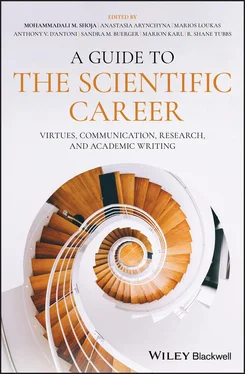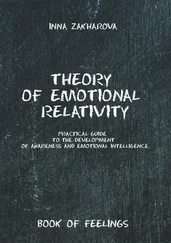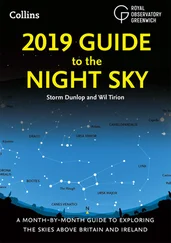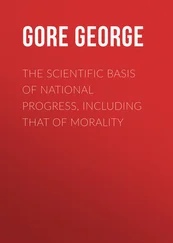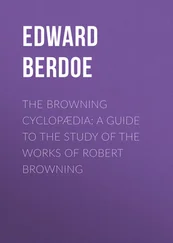The MBTI is a personality assessment tool that, through a series of simple questions, creates a four‐letter personality type for the examinee based on four different personality attributes, originally described by Carl Jung (Freeman 2004). Each personality attribute contains two contrasting subtypes, each represented by a letter. With this breakdown, Myers and Briggs hypothesized that everyone could fall into 1 of 16 different personality types (critics often dismissing the MBTI as too narrowly grouping the personalities of the population) (Pittenger 2005). The four major personality attributes measured by the MTBI are described as follows.
2.2.1 Relationships to Others: Extroversion (E) Versus Introversion (I)
This attribute reflects from whom an individual may derive one's energy–from within, or from those in proximity. Introverts are not described as asocial, but, rather, those who prefer to solve problems by thinking to themselves without an inherent drive to bounce ideas off other people (Atanacio 2010; Freeman 2013). Introverts tend to function better in environments where thought often proceeds speech, and the people surrounding them are also good listeners. Extroverts, by contrast, derive their energy from social situations; they become empowered in group settings, and thoughts and ideas are best conveyed by thinking aloud. Extroverts tend to be more impulsive and expressive than their introverted counterparts (Stilwell et al. 2000; Freeman 2013).
2.2.2 How Information Is Gathered and Metabolized: Sensing (S) Versus Intuition (N)
Sensors rely on the physical world around them to obtain information. They are able to take in the details of their surroundings and rely on the hard, practical facts of nature to arrive at conclusions. Sensors have a tendency to rely on previous experiences to predict the next occurrence in a series of events, and similarly tend to be very literal. Intuitives tend to look beyond the facts and details and rely more on meanings, concepts, and bigger‐pictures to understand a specific situation. Intuitives rely on their ability to recognize their gut‐feelings to understand a series of events. With a few general understanding of their environment, intuitives are comfortable in further exploration of a new concept without the need for excessive detail (Stilwell et al. 2000; Freeman 2013).
2.2.3 Decision‐Making Ability: Thinking (T) Versus Feeling (F)
Thinkers are people who rely on evidence‐based objective rationality to come to conclusions. A thinker by personality is more likely to choose the more logical and direct path to an answer. Thinkers find reward in analytics and problem solving. Feelers are dependent on subjective assessments of their surroundings. They tend to be empathetic and compassionate people, often causing them to consider how their actions may affect other people before acting. Feelers find reward in other people's satisfaction with a given situation (Stilwell et al. 2000; Freeman 2013).
2.2.4 Organization: Judgment (J) Versus Perception (P)
In interacting with the outside world, this final attribute assesses in which environment one may operate most optimally. Judgers tend to be very organized, schedule‐driven people. Their lives tend to be orderly, planned, and controlled. Structure and organization are paramount and with this, a sense of command over their environment leads to quick and effective decision‐making. This comes at a risk of close‐mindedness, however. Perceivers tend to be more open‐minded, relaxed, and capable of dealing with change. Though seemingly irresponsible from their flexibility and spontaneity, their ability to be aware of ideas and events is far higher than that of Judgers, making them more likely to observe the world before coming to a decision. Decisiveness comes more naturally to judgers, however (Stilwell et al. 2000; Freeman 2013).
From these four personality attributes (and eight variations), comes 16 different combinations of personality according to Myers‐Briggs. Effective researchers may fall into any one of the 16 different personality types, but a working knowledge of one's traits is crucial for successful self‐assessment and team collaboration.
2.3 Continuous Self‐Assessment
An honest assessment of one's personality attributes and leadership styles is an effective way to understand the working environment, the temperament, and relationships with co‐researchers, and provides a window of opportunity for self‐improvement to better develop the qualities in effective leadership that one may lack. As stated in the beginning of this chapter, a researcher must be an enthusiastic leader, highly curious, and motivated to contribute to his or her field and inspire those in proximity. While there are many variables in personality and leadership style, the best qualities for researchers are the ones that unite ideas and minds in a supportive and effective atmosphere. Quality research and a strong body of researchers will emerge when the attitude of the leadership and contributors is full of harmony and mutual intrigue for the research in question.
2.4 Tips for Developing a Leader‐Quality Scientist
2.4.1 Be an Entrepreneur
Scientists should develop entrepreneurial skills through exposure to industry and collaborating with business sector. Although the potential conflicts of interests should always be fully disclosed in any research output and presentation, the entrepreneur‐scientists tend to have a greater immediate impact on the community. This is achieved by scientific discoveries and new ideas being transformed into available products as quickly as possible. Not only the financial gain and resulting fame can be substantial, but entrepreneurship will also create an atmosphere of enthusiasm and motivation among the new generation of young scientists.
2.4.2 Work Hard and Work Smart
As Cardinal James Gibbons (1834–1921) righteously indicated, “There are no office hours for leaders.” The hard rule of leadership proposed by Molinaro (2016) states that if one avoids the hard work of leadership, he will become a weak leader; but if he embraces the hard work, he will become a strong leader. Leadership requires hard work and also smart working to ensure the available resources are not being wasted but instead are being utilized in a meaningful manner that brings efficiency and sustainability to the management system (McCauley‐Bush 2013). The sense of purpose and urgency motivates a leader to do his best and to maintain his determination and commitment, and the resultant hard work creates opportunity by itself (Junarso 2008). Carol Dweck, an American psychologist, has distinguished two leadership mindsets, namely, fixed vs. growth mindset (Dweck 2006). Those with a fixed mindset see talent or genius as an inborn quality (i.e. one either has it or not), while people with a growth mindset see talent as a quality that can be achieved by active learning, perseverance, and purposefulness. The growth mindset is the definite precursor for leadership success as it fosters smart, hard work. This concept is consistent with how Vince Lombardi, an American football player (1913−1970), characterized the constitution of leaders: “Leaders are not born; they are made. And they are made just like anything else, through hard work. And that is the price we will have to pay to achieve that goal, or any goal.”
2.4.3 Listen, Observe, and Learn on a Daily Basis
Active listening is one of the most important skills of interpersonal communication that requires lifelong training (West and Turner 2009). Five levels of listening have been identified, namely, passive, marginal, projective, sensitive, and active listening (Bhardwaj 2008; Verma 2015). In passive listening, the listener is rather indifferent to the content of discussion, making a change in his thought trends and ongoing ideas improbable. In marginal listening, the listener only engages in superficial understanding of the discussion without allowing a significant change in his thought trends. In projective listening, the listener absorbs the information in accordance with his own frame of reference. The opposite of projective listening is sensitive (or empathetic) listening, in which the listener understands the viewpoint of the speaker without distorting it with his own perspectives. In active listening, the listener demonstrates a genuine interest in speaker's viewpoint, pays full attention to the speaker's words, speech tone, and body language, and accurately analyzes, interprets, and remembers the provided information (Bhardwaj 2008). The most‐effective form of listening is active listening, which, when combined with sensitive listening, can bring to fruition a charismatic leadership. Active listening is a dynamic endeavor that requires attributes that include, but are not limited to, serious concentration, empathy, nonjudgmental attitude, interest in the speaker, patience, and willingness to take responsibility to fully comprehend the information, and to interpret the meanings and provide feedback (Bhardwaj 2008; Hoppe 2011). As for active listening, we should refer to a statement by Peter Drucker, an Austrian American management consultant: “The most important thing in communication is to hear what is not being said.” In a cross‐cultural leadership setting – commonly seen in academic institutions – active listening is a key to closing the cultural gaps (Whitfield 2014), which can ultimately lead to workplace security and more productivity.
Читать дальше
